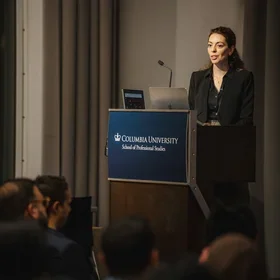Rick Hardin, the founder of Rick Hardin Associates, shared some insights with Dr. Steve Safier and Tanea Ellis’s Integrated Talent Management class, drawing from his 30-plus years of organization design and culture change experience. Below are highlights from his presentation, which focused on the benefits and challenges of matrix organizations across industries such as professional services, health care, and manufacturing.
Results. “Every organization at this moment in time is perfectly designed to get the results they’re getting.”
Advantages and Disadvantages. “The No. 1 advantage of matrix organizations is that they foster effective collaboration across product and functional areas. The most significant disadvantages are costs (more people doubling up on similar work in different areas) and performance management, which is a little more complicated and can lead to confusion if not done well.”
Employee Management. “Matrix organizations can address overwork and stress, which can take a toll on people, through a combination of long-term team-based rewards, career progression over time, sabbaticals, and short-term performance incentives.”
Career advice. “Figure out what you love, what you really like to do, then do that all in, all the way. The rest will take care of itself. Opportunities will open up in different ways that you would have never imagined or figured out linearly.”
The Columbia University M.S. in Human Capital Management program prepares graduates to be world-class HCM strategists able to address changing needs in building and motivating talented, engaged workforces in the private, public, academic, and not-for-profit sectors. The program is available part-time, full-time, on-campus, and online.
Fall 2023 application deadlines for the M.S. in Human Capital Management program are February 15, 2023 for the priority deadline; March 15 for applicants with international documents; and June 15 for the final deadline. Learn more here.



